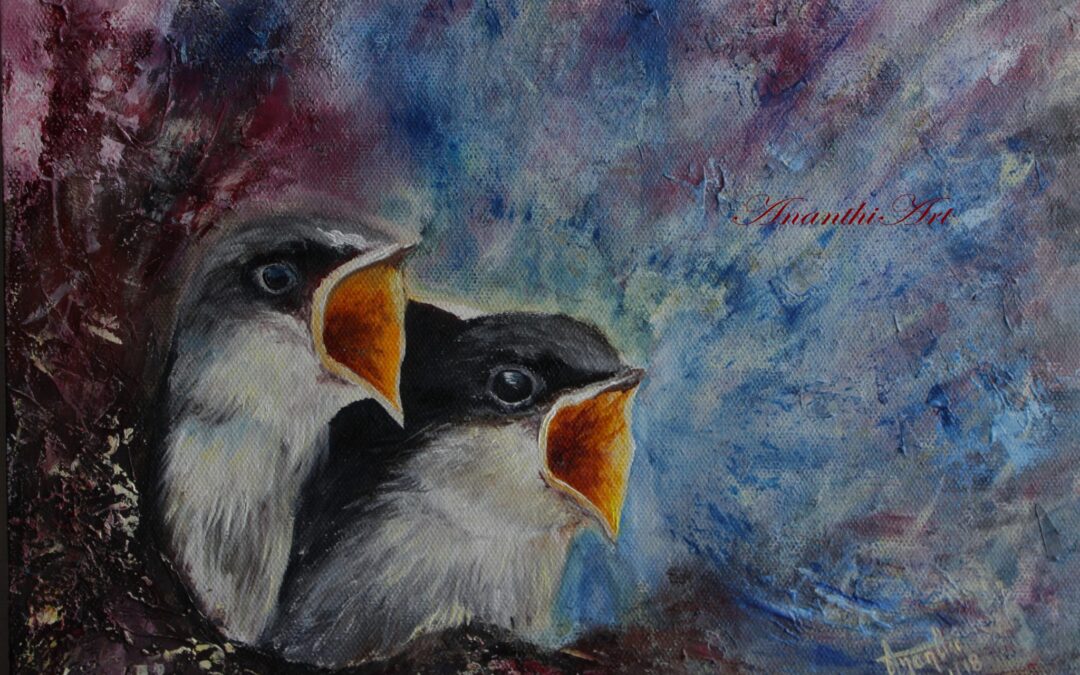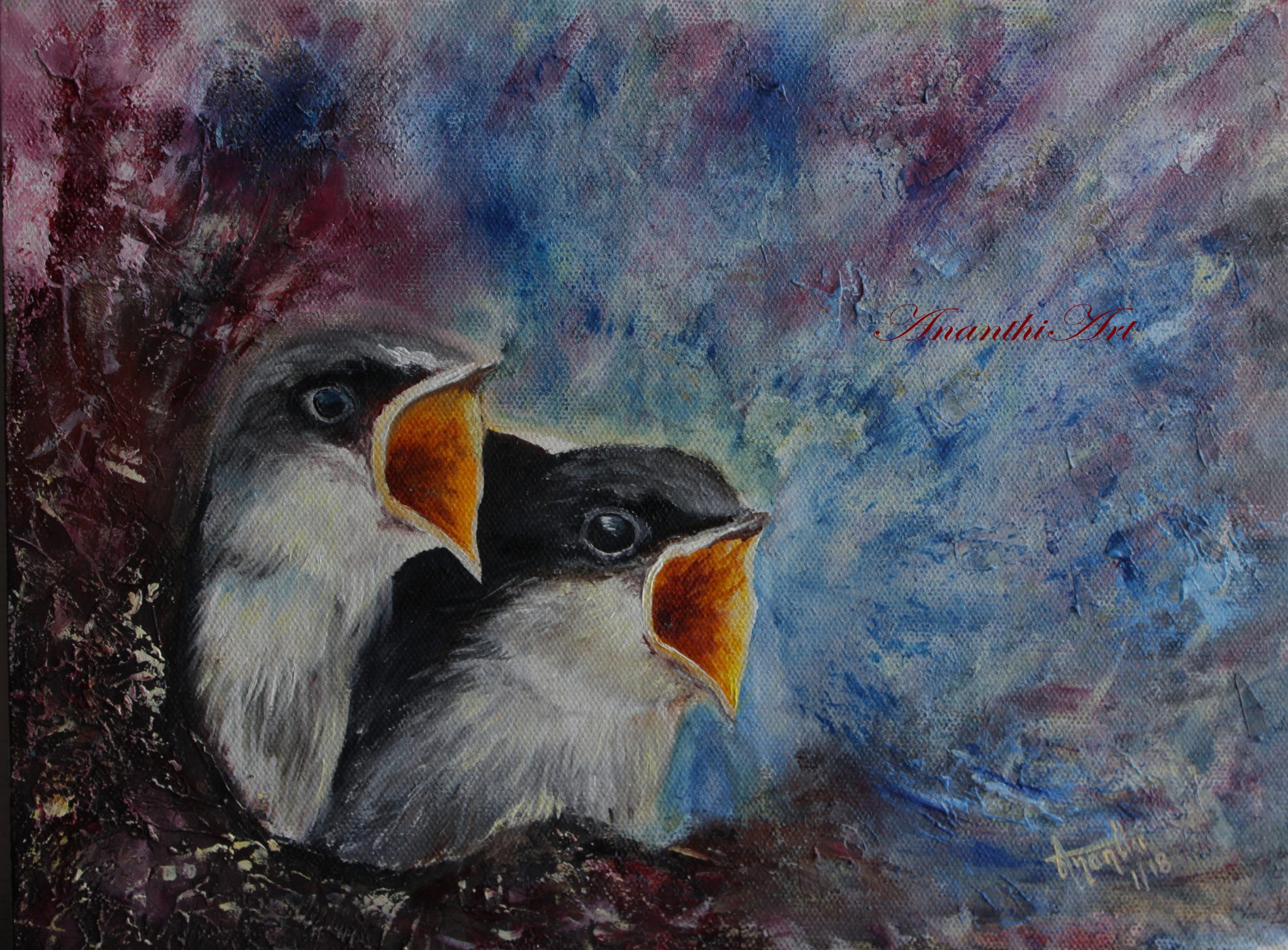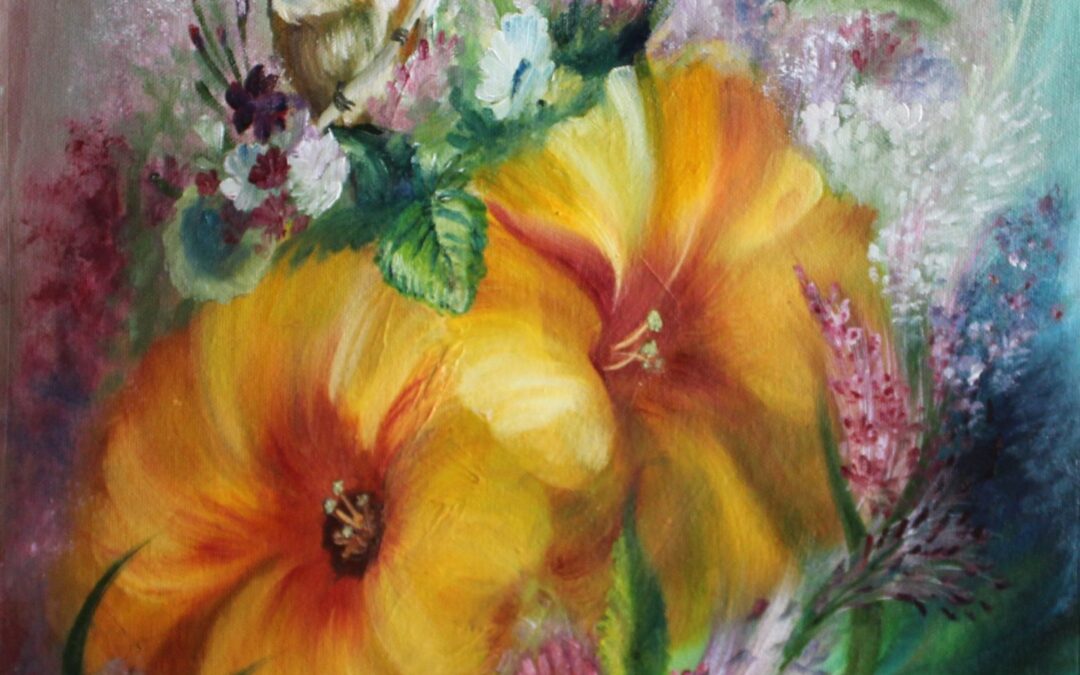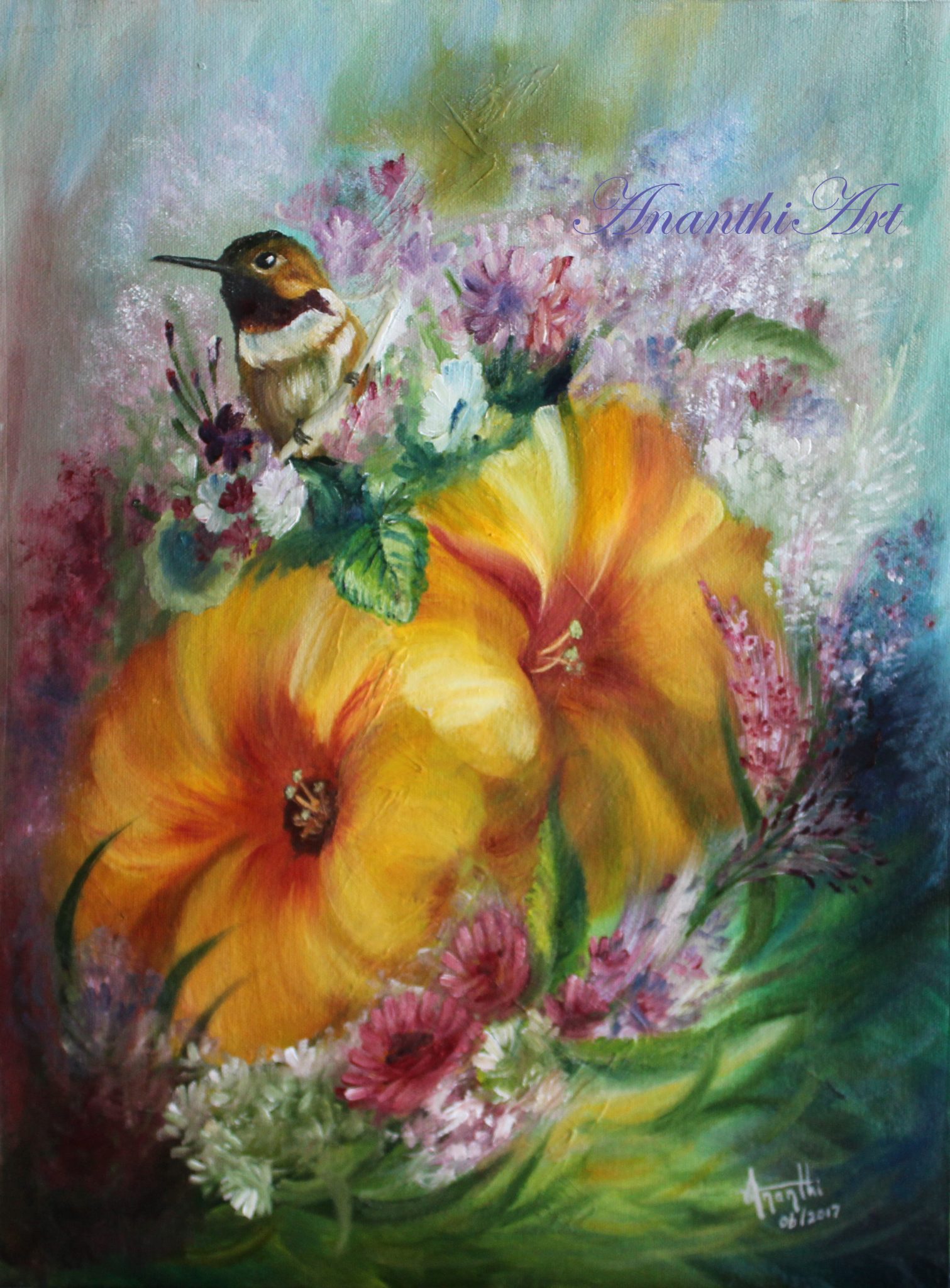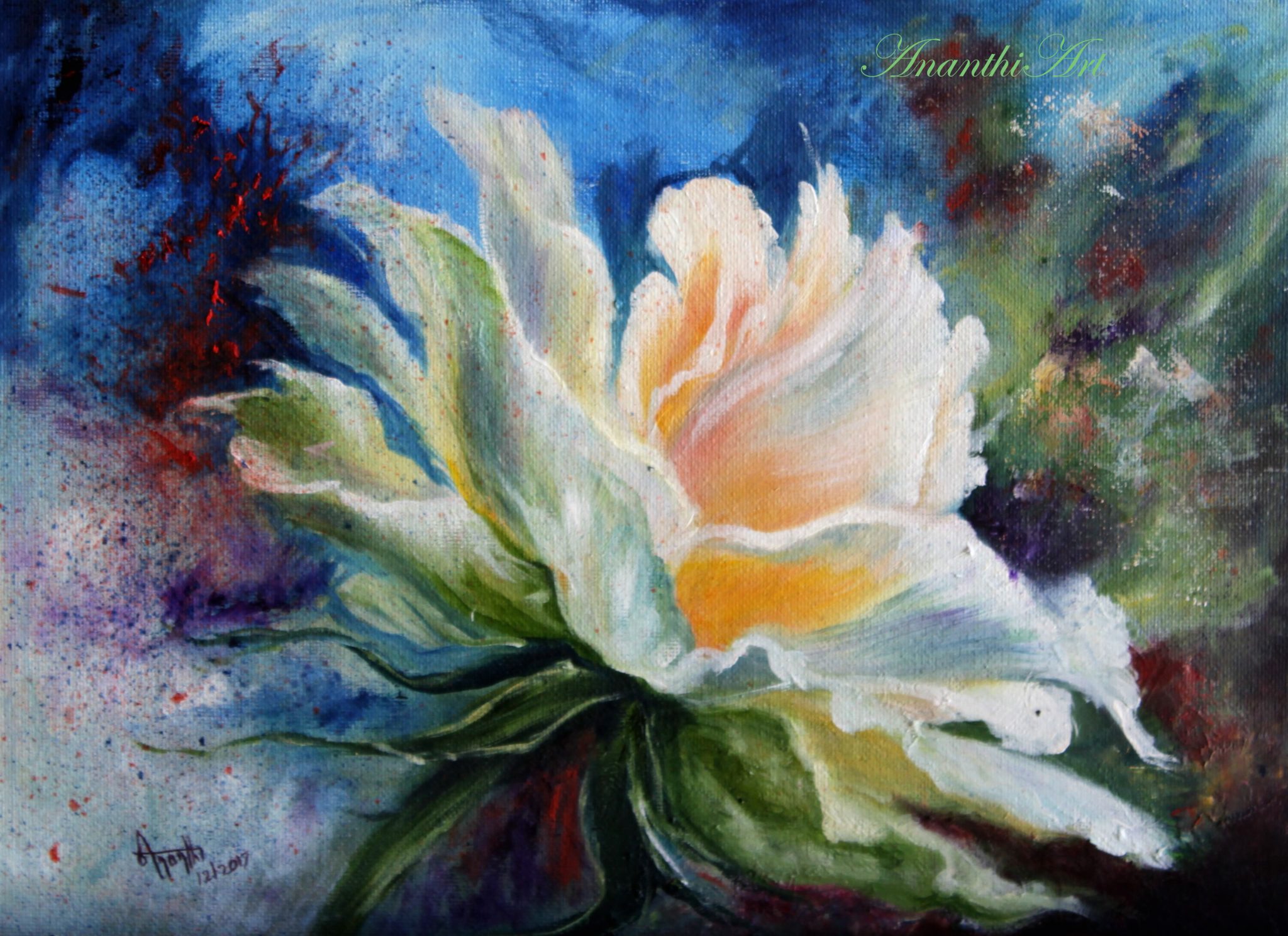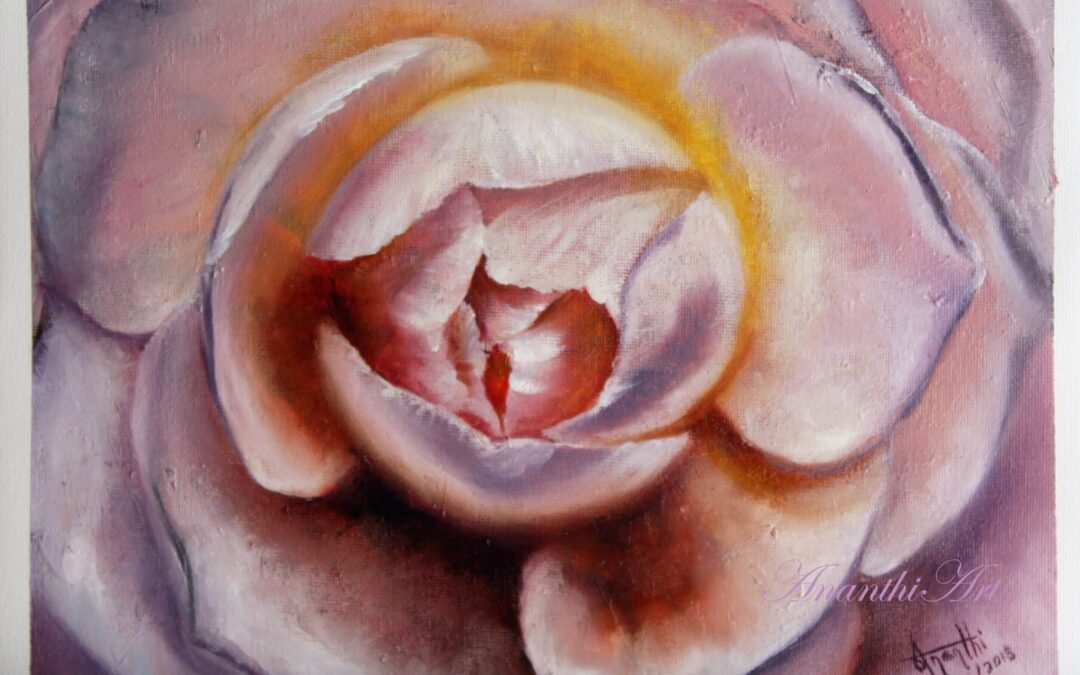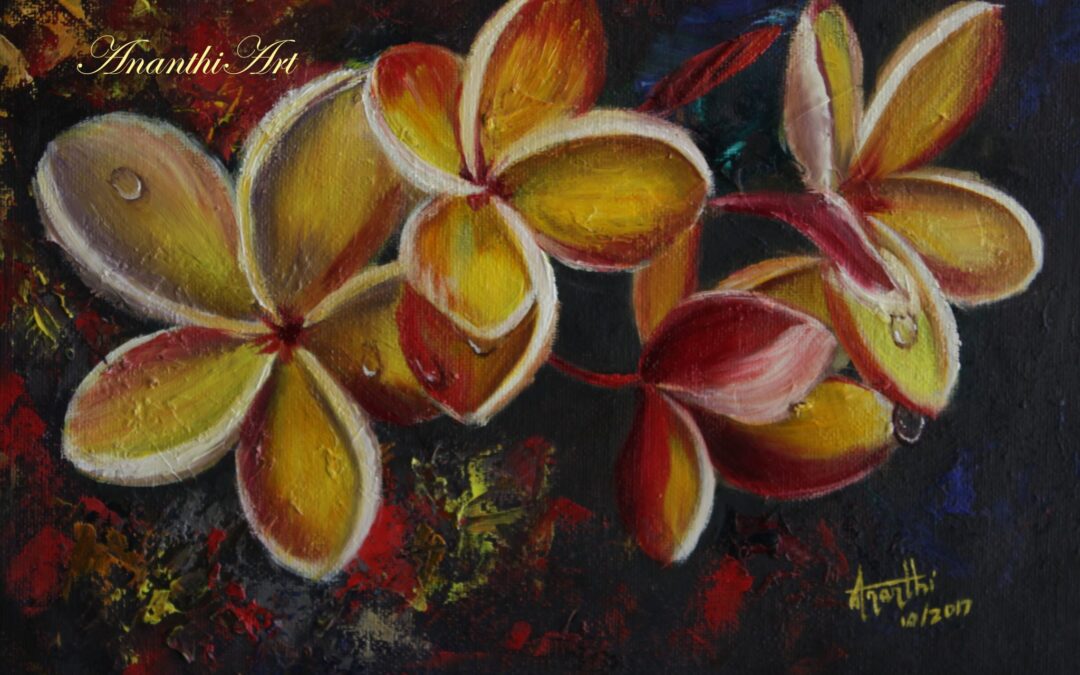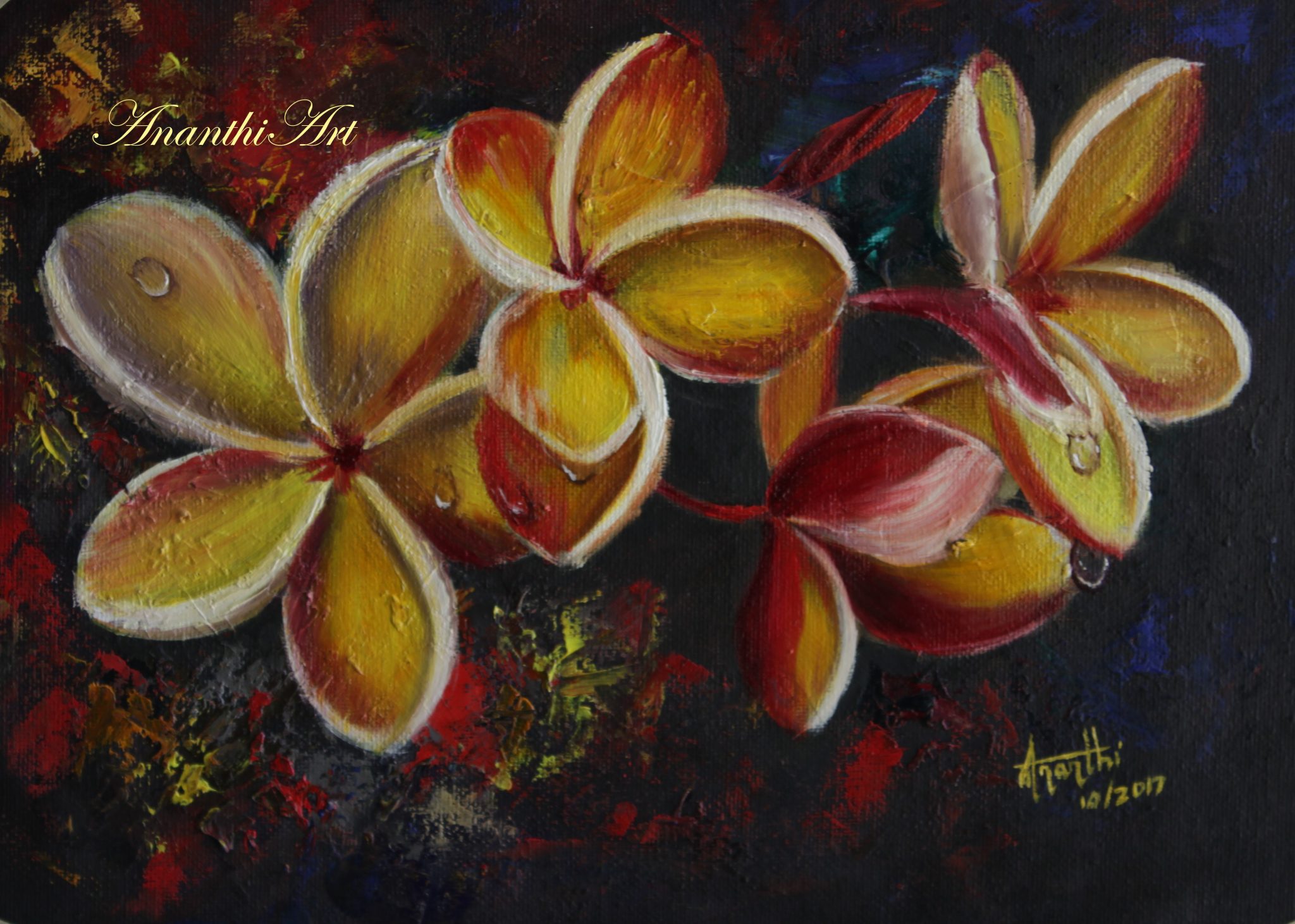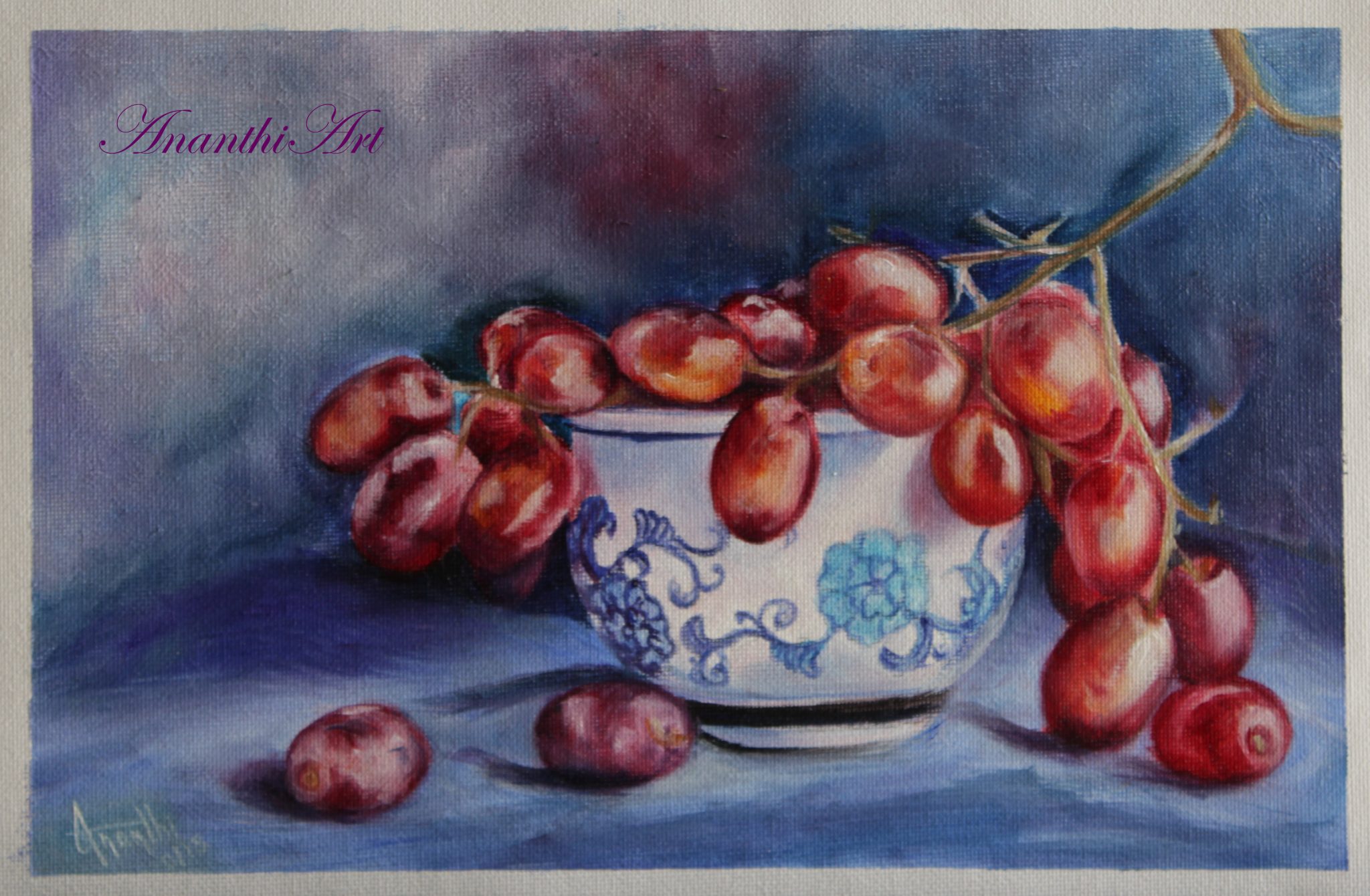Oil paint is versatile and the techniques are overwhelming. It’s important to learn and explore different painting techniques to achieve the desired effects. The forgiving nature of this painting medium allows us to rectify the mistakes easily. In this article let’s go through some of the basic techniques and few tricks of the trade that are used to get most out of this medium.
Wash
Wash is applying a thin transparent layer of paint on a white canvas. This technique is often used at the beginning of a painting by thinning down a color using turpentine or mineral spirit to paint a background. When the wash is uniform its called as a flat wash and when there is a gradual change in value it is called as a graded wash. Adding more turpentine to the paint, the color loses consistency, glossy nature and opacity, and becomes transparent similar to watercolor. The color dries much faster and can be painted over without muddying.
Direct Application
Paint can be mixed with a small amount of medium and applied directly with a brush on to the canvas.
Blending
When one color or value is merged into another to eliminate sharp boundary its called as blending.
Roughing-Out
Roughing-Out is nothing but painting the entire surface of the canvas with approximate colors using large strokes to make out only the most significant masses of color, details are reserved for later. The dominant color chosen determines the color range of the rest of the painting. Paint must be thin down with turpentine or mineral spirit in order to do so.
Broken Color
Broken color means a color is applied as strokes of varied hues placed side to side and is not blended. The paint must be thick so it does not run and allows the brush mark to be seen.
Pointillism
Pointillism is the technique of placing points of pure colors side by side without overlapping to create the effects of optical mixing.
Colored Grounds
Rather than painting on a pure white surface, artists often times prefer to cover the ground with a subtle hue of any color diluted with turpentine. It will be closer to the average tone of the final picture and acts as a background. Covering with mid-tones makes it easy to get lights and darks later. Allowing the ground color to show through helps to unify the picture.
Underpainting
Underpainting is a technique of establishing the main dark and light areas with fairly neutral color diluted with turpentine or mineral spirit. Often times thin glazes are painted over the underpainting once its dry.
Chiaroscuro
Chiaroscuro is a technique in which the relationship between the background and the subject is accentuated by establishing a strong contrast between illuminated volumes and shaded areas. The transition from light to shadow is fast with no mid tones. The background is very dark or black.
Wet into Wet
It’s a technique of applying wet paint into a previously painted color while still wet. This method allows colors to merge into one another resulting in softer boundaries. It is necessary to develop the skill not to rework too much that destroys the brushwork which may result in muddy painting.
Alla Prima
Alla prima is a wet on wet technique where the entire painting is done in one session. There is no initial underpainting done. Starting and finishing a painting in a single session captures the spontaneity and requires a good knowledge of color and painting technique.
Fat Over Lean
“Fat over lean”, is a golden rule in oil painting. Paint from a tube and those mixed with extra oil are considered as “Fat”. Paint that is thinned with turpentine or mineral spirit is considered as lean. Painting fat over lean allows the bottom layer to dry faster than those at the top. Reversing will result in cracked painting.
Wet on dry
Allowing each layer to dry before adding the next is called as wet on dry. In this method, artist begins with an underpainting and finishes with glazing or scumbling. This technique is not meant for quick impressionist approach but suitable for more complex compositions. The usual method of working is from dark to light and keeping the layers thin in the beginning and reserving thicker highlights until last.
Glazing
Glazing is applying a thin layer of paint over a dry layer that is either thick or thin to alter its value and or color. The medium used for glazing is usually a mixture of oil that is non-yellowing and turpentine. There is medium especially sold for glazing, as this technique requires just the right amount of oil and pigment.
Scrubbing
Applying an uneven layer of paint without any medium over a dry, thin underpainting in order to create a veil-like impression is called scumbling. The effects vary depending on the thickness of the paint, texture of canvas and the tools used like brush, rag, sponge, finger or a palette knife.
Oiling Out
A thin layer of oil is applied to previously dried layer in order to add more color or make corrections. This is called Oiling out and is useful when working on multiple painting sessions.
Dry Brush and Frottage
In this method, hard bristle brush is used to apply color lightly over a dry textured layer so that the underlying colors show through. The brush strokes are not repeated rather dragged in different directions to produce interesting effects.
Sgraffito
Sgraffito technique involves scratching or scoring a freshly painted thick layer of paint with any rigid tool including a knife, fork, comb or the handle of a paintbrush to reveal a layer of dry color underneath. This is a useful method to depict hair, wavelets on the sea, veins on leaves, crease in a skin, the pattern of doily etc.
Imprinting
Pressing a layer of wet paint with materials including spoons, fork, slotted spoon, saw blades leaves mark on the surface creating exciting textures.
Sponging
A sponge can be used to produce mottled texture in a painting.
Spattering
Diluted paint can be sprayed to create special effects.
Tonking
A paper towel or a sheet of absorbent paper can be placed over a heavily painted area and gently rubbed with palm to remove excess paint. This method is called as tonking and is useful when the paint is too thick in the early stage of painting. Helps in eliminate details while leaving the main structures.
Pentimento
Pentimento is nothing but letting traces of previous work show through after making alterations. Knife or brush can be used to scrap when the paint is still wet and can be painted over.
Impasto
Applying a thick paint with knife or brush to retain the marks is called as impasto. This is an expressive technique and can produce attractive effects when thin dark glazes are laid over a light-colored impasto. The picture surface acquires three-dimensional quality and creates textures similar to relief sculptures. There is special medium available for impasto work, which helps in bulking out the paint, prevents cracking, retains marks and speeds up drying time.
Knife Painting
Using a knife to paint gives a different effect than those of brushes. Painting knives are different from that of palette knives and are made of a variety of size and shapes.
Finger Painting
Fingers can be used for applying and smoothing paint. Thick paint can be smeared off to get the desired effect. No brush or knife could substitute the subtle effect and smooth gradation obtained by using fingers.
